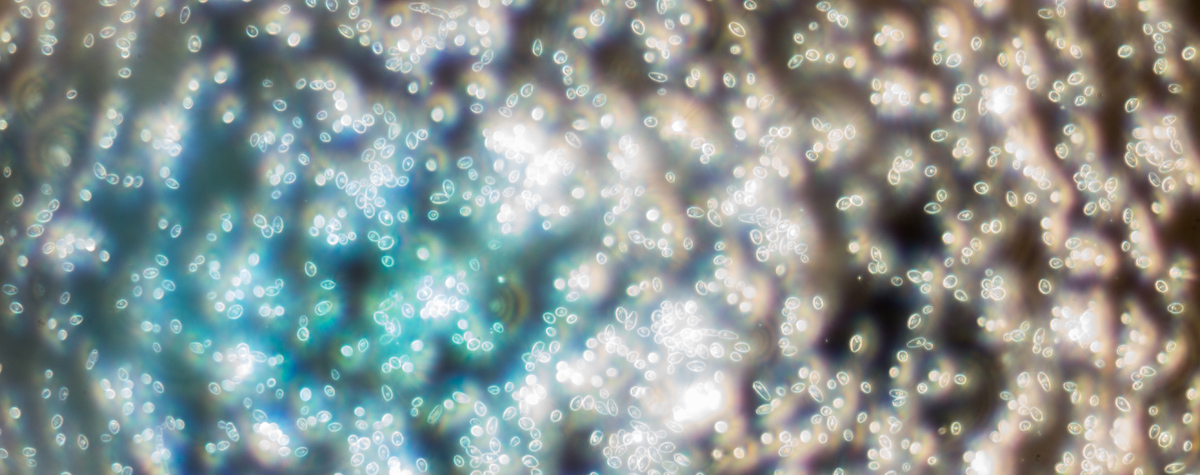I encountered it again a while later, and after some reading around the subject of wine faults, I realised that this was likely Brettanomyces. I’ve been fascinated by this microbe ever since.
Brettanomyces, known colloquially as ‘brett’, is a rogue yeast species that affects a lot of red wines, and it’s one of the most interesting of all wine faults. This is because at low levels, in the right wines, it can add some complexity and interest. To some winemakers, it’s always a fault, while to others it’s something they are wary of, but don’t mind it in the right context. It’s also a subject that’s the source of a lot of confusion, because it is frequently misdiagnosed.
'Some of these wines were quite famous'One of my friends, Sam Harrop, a master of wine and consultant winemaker, did a very interesting exercise for his (MW) dissertation. It was on Brettanomyces in Syrah, and he selected a bunch of well-known Syrahs or blends containing a good dollop of Syrah from around the world. He then put on a blind tasting, which involved lots of wine trade people, including me. We had to taste the wines, then rate them as to whether or not they were bretty, and how bretty they were. Then he tested all the wines to see exactly how bretty they were. Later on, we got a cheat sheet showing what the wines were and the level of brett they actually contained. What was interesting was that some of these wines were quite famous, and they were stuffed full of brett. Were those wines faulty? Not to the many people who spent good money on them and enjoyed them.
So how does brett happen?
Some people think of it like an infection. If a wine – and it’s normally a red wine, for reasons we’ll come to later – has finished fermentation and is ageing in barrel, the idea is that if there is brett contamination in the barrel or winery, then brett cells can multiply and ‘infect’ the wine. Others see it differently: brett is quite widely present, and if you create an environment where it can grow, then there’s a good chance that it will. The truth probably lies somewhere in the middle.It’s clear that barrels can host species of yeasts or bacteria, because it’s very hard to clean them completely: microbes can survive deeper in the wood past where most cleaning techniques can reach. But the wine habitat is also important, and there is some evidence that brett exists in the vineyard, and can come into the winery on grapes (although not a lot of evidence, admittedly).
'There are various things that can be done'Best practice is to make ageing wine an inhospitable place for brett. There are various things that can be done. Brett can be kept in check by having enough molecular sulfur dioxide (SO2) present in the wine. When SO2 is present in wine, some of it is bound and some of it is free. The free portion is what is important, because it is active, but how much of the free portion is in a state called ‘molecular’ depends on the pH. You need much less at lower pH than at high pH. Wines with high pH are therefore more at risk of brett: once the pH reaches 3.9 or 4 then essentially no SO2 is in the molecular form and the wine is more or less unprotected.
The real risk period for most wines is between alcoholic fermentation and malolactic fermentation, where SO2 levels can’t be too high or else malolactic fermentation won’t start. This is one reason why co-inoculation with carefully chosen yeast and bacteria has become popular – which means that malolactic and alcoholic fermentation take place at the same time, and then it’s possible to add SO2 straight after.
'Good advice is not to add SO2 in small doses'Good advice is not to add SO2 in small doses, but instead to add it in fewer larger doses, which can knock back any brett growth much more effectively. Small dribbles just get bound up and don’t really work.
Cold cellars help. Traditionally, in regions like Burgundy, wines were raised in barrel in underground cellars. After alcoholic fermentation the cellars would get very cold and the wine would over-winter at low temperatures. In the spring, the cellar would warm and malolactic would start. The risk period for brett was therefore long, but the wine was cold which mitigated the risk. In many wine regions wines are kept in overground warehouses that can be quite a bit warmer, and this increases brett risk. I heard of a producer who had brett problems that were solved when they relocated to a cooler cellar. And others have more brett problems at the top of a barrel stack, where it is warmer, than at the bottom, which is cooler.
Another factor that can reduce brett risk is fermenting to dryness. Brett can feed off any residual sugar in the wine. Although it can also find enough to feed on in a dry wine, one with a bit of residual sugar is more at risk. Brett also likes reds with higher phenolic content. Some people think that new barrels can be a risk factor, and I know of a winemaker who thinks that one cooper he uses has an issue and the wines in these barrels often show brett. Brett can also bloom in bottle, so if there is any doubt, then it’s best to sterile filter a wine at bottling.
Why is it that whites rarely have brett?
It’s mainly because they have lower pH than reds, and less phenolics. But it is found in some whites, too: especially Gewurztraminer, in my experience, which has high pH and high phenolics, and skin-fermented (‘orange’) wines can often show it. I think many people miss brett in whites because they aren’t expecting to find it.What does brett taste like?
This is quite hard to say, because it expresses itself differently in different wines. And strains of brett differ too. In general, it gives itself away with a savoury, spicy, slightly animally/horsey/stable smell. It can smell of germolene/fabric plasters, too, with a slightly phenolic/medicinal character. On the palate, in addition, it gives a drying character and a metallic edge to the finish. In its early stages it’s evident because it steals some of the fruit, and it can also strip the palate of its flesh: the remaining unfermentable sugars which often give wines a little hint of textural sweetness get gobbled up, and so the wine can taste a little hard and less fleshy. In extreme examples, brett is very farmyardy and stinky, but at lower levels it can be quite subtle, and you have to look for it to find it.Winemakers are trained to spot brett early on, and so are often very sensitive to it. They typically find it very hard to enjoy a wine with any brett at all. But many consumers quite like wines with just a touch. The problem is, from a winemaking perspective, brett is very hard to control, and it can be a bit of a lottery. How lucky do you feel? And then, once the wine is bottled, will it carry on developing? For this reason, very few will deliberately play with brett, even though the results can be quite nice. It’s one of the most interesting faults of all.
Dr Jamie Goode completed a PhD in plant biology and worked as a science editor before switching to wine. He writes widely for a range of magazines, has written four books, including Wine Science, and lectures and judges wine around the world. He is co-chair of the International Wine Challenge.













.png)






